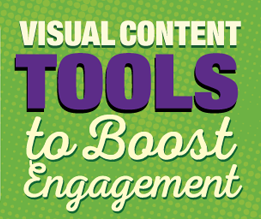But to be responsive to change, you need to anticipate changes, yes? This quote from Darwin was not written to apply to businesses, but today it very much does. Does your business put priority on your competitive analysis? Does it monitor marketplace trends and its understanding of market change? And most importantly, does it put a priority on being adaptable to market change? (See our article on ideas for generating a growth strategy.)

No business attribute is more important today than adaptability, as many, many businesses are on the brink of irrelevance unless they change as fast as change itself. Your strategies do run out of steam, get old and become ineffective … you need to keep refreshing them based on your anticipation of the next change. Competitive analysis plays a key role in spotting changes going on around you.
Watch for marketplace trends and shifts … look at the fringe of the environment, for that is where trends first appear. Work at developing your anticipation, and study how trends start to interact with each other as well as customers and businesses. Draw conclusions and derive new strategies for the opportunities that are being created.
The most successful businesses are the most responsive, and the most adaptable … continually reinventing themselves, proactively responding to emerging customer needs, and pioneering new markets based on these needs. But you must anticipate and act.
So be like a magnet in attracting lots of observations of events going on around you, and in response and anticipation, generate lots of ideas. Prototype and experiment with the better of these ideas and continue to learn. Don’t fear failures as you learn as much or more from failures as you do from your successes.
There are many, many examples of competitive analysis (or lack thereof) all around us, both past and present. Here are 16 very helpful tools grouped into 5 categories to help you with competitive analysis for your business … without tremendous time requirements:
Monitoring mentions of your business
Google Alerts is a very simple and easy-to-use, FREE tool that will send reports right to your inbox. If you want to know every single time you or your competitor is mentioned online, whether as a link or simply a mention, you’ll get that report. You can monitor keywords as well. It’s up to you what you want to track.
We recommend you use the tool to get competitors’ backlinks, monitor social (or another website) mentions of your company, or monitor keyword mentions.

SocialMention has lots of cool features that focus on blogs, videos, and social. You enter a search term, either a keyword or a company, and the tool will tell you what’s being said about that term across blogs and social platforms. You can see how many times and how often it’s mentioned and you even can subscribe to an RSS feed for that term, so you never miss a beat.
This tool is best for tracking keyword or company mentions and for cross-analyzing what is being said across different social networks. This helps in discovering where potential customers hang out. This tool is free.
Social media tools
Topsy is a social media tool that focuses on Twitter. You can look up your competitors’ tweets all the way back to 2006 (although you surely won’t need to go back more than a few months), and get free information when you type in a site. You can see how many tweets that company had, a list of those tweets, and which tweets were influential. Feel free to filter and get whatever information you need. Although you can get the information discussed above for free right away, the PRO version gives you real-time results and better reports.
Marketing Grader is a cool tool because it gives each of your competitors an overall score based on social media activity, blogging success, SEO, and lead generation. It’s fun to see if their score fluctuates and then to notice if your score does the same.
We recommend it be used to monitor social activity and SEO utilization of competitors
InfiniGraph tracks what is trending in your social media circles by focusing on your specific industry. The idea behind this tool is that you use the power of your audience to know what content and brands are trending with them. It is also useful for obtaining insight into your customers. A free tool.
Website analysis tools
Majestic SEO, one of the more popular tools, permits you to download the link profile for any of your competitors’ sites. This means thousands and thousands of links will be right at your fingertips. You can export the link profile, and then slice it and dice it as you wish. There is a free option, a Silver plan for $49/month or $499.90/year, a Gold plan for $149.99/month or $1,499.90/year, and a platinum plan for $399.99/month or $3,999.90/year. Check out their pricing page because it lets you know which types of companies should use which types of plans.

Google Keyword Planner, formerly the Google Keyword Tool and Traffic Estimator, seems to have it all. Although it doesn’t focus specifically on competitor analysis (it’s more focused on your own website), finding competitor data is one feature of the tool. Because it’s from Google, we consider it one of the best out there. Use it to find competitor keyword data (paid and organic) and to monitor your own website as well as those of your competitors. You need to sign up for a free Google AdWords account to access the tool
SimilarWeb is a competitive analytics-monitoring tool that provides data on traffic sources, top content, social mentions, and more. There’s a lot of data available for free, including referral sites, search traffic, key topics, and more.
SpyOnWeb is a very popular tool because it’s so easy to use. With this tool, you enter a URL, Google AdSense or Google Analytics code, or IP address to find out what resources belong to the same owner. In other words, when you type in a domain, you get results for all of the different IP addresses and then a list of domains that have that same IP address (in some cases a site will have more than one IP address).
Open Site Explorer tool comes from Moz, so you know it’s got to be good. It’s one of the most popular tools out there today, and it allows you to follow your competitors’ link-building efforts. You can see who is linking back to them regarding PageRank, authority/domain, and anchor text. You also can compare link data, which can help keep things easy. You can get some data for free right away, but in order to use Open Site Explorer to the fullest extent, you will need Moz’s Analytics Standard package for $99/month.
Ahrefs is another popular tool. It will show you things like top pages, IPs, and external links regarding your competitors. Speaking from experience, the site has great customer service and works with you to make sure you get what you need. This tool is free if you want only 3 different competitor reports and 10 results (limited time only), but the most upgrade for $79/month to get more detailed information.
Open Social Buzz provides real-time searches of Twitter, Google+, Facebook, and LinkedIn. Plug in your competitor’s name and see how much social prominence they have.
Organizational tool
Instapaper is a simple tool that allows you to save web pages for later reading on your computer, mobile phone, or even Kindle. Once you sign up for an account (which takes just a few minutes), you can add the bookmarklet to your bookmark bar to keep things easy. When it comes to spying on your competition, it’s incredibly helpful to know who your competition is, first and foremost, and this tool will help. A free tool.
Ad monitoring tools
Moat provides a free ad search tool that allows you to key in your competitors’ brand names and sees what ads they have shown recently. You can see the size and some of the places the ads have been seen recently, giving you a good guide for where to place your own advertising.
AdGooroo is a multifunctional tool that includes a Display Insight feature. The basic service lets you monitor ads for up to ten competitors, ranked by page views. Its Industry Insight allows you to figure out ad placements, too. Pricing is not stated.
iSpionage looks at how your competitors are advertising with Google, Microsoft, and Yahoo search marketing tools. You can view ads and track spending. It also includes SEO competitive research and a social monitoring tool for Twitter and Facebook.
MixRank allows you to see the mix of ads that companies are using. You can see a snapshot of this data (without registering) that covers display ads, text ads, advertisers, and demographics, though you will have to create an account for the full report.
We’re not talking industrial espionage, but there are plenty of good reasons to see what competitors are doing, including:
Get inspiration and ideas for new ways to connect with customers and thereby improve customer retention.
Find out if competitors are doing anything better than you and how you can match it.
Look under the hood of their marketing optimization strategy and see what you can learn and apply.
What other great tools have you discovered for tracking the competition? Any comments or questions to add?
So what’s the conclusion? The conclusion is there is no conclusion. There is only the next step. And that next step is completely up to you. But believe in the effectiveness of collaborative innovation. And put it to good use in adapting to changes in your business environment.
It’s up to you to keep improving your learning and experience with innovation and creativity efforts. Lessons are all around you. In this case, your competitor may be providing the ideas and or inspiration. But the key is in knowing that it is within you already.
All you get is what you bring to the fight. And that fight gets better every day you learn and apply new lessons.
When things go wrong, what’s most important is your next step.
Try. Learn. Improve. Repeat.
Are you devoting enough energy to improving your creativity, innovation, and ideas?
Do you have a lesson about making your creativity better you can share with this community? Have any questions or comments to add in the section below?
Like this short blog? Follow Digital Spark Marketing on LinkedIn or add us to your circles for 3-4 short, interesting blogs, and stories per week.
Mike Schoultz is the founder of Digital Spark Marketing, a digital marketing and customer service agency. With 40 years of business experience, he blogs on topics that relate to improving the performance of your business. Find them on G+, Twitter, and LinkedIn.
Digital Spark Marketing will stretch your thinking and your ability to adapt to change. We also provide some fun and inspiration along the way. Call us for a free quote today. You will be amazed at how reasonable we will be.
More reading on creativity and innovation from Digital Spark Marketing’s Library:
How You Can Improve Creative Thinking Skills by Adding Constraints
The Small Business Crash Course on Creative Business Ideas